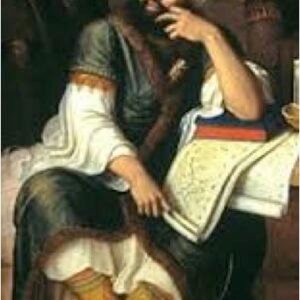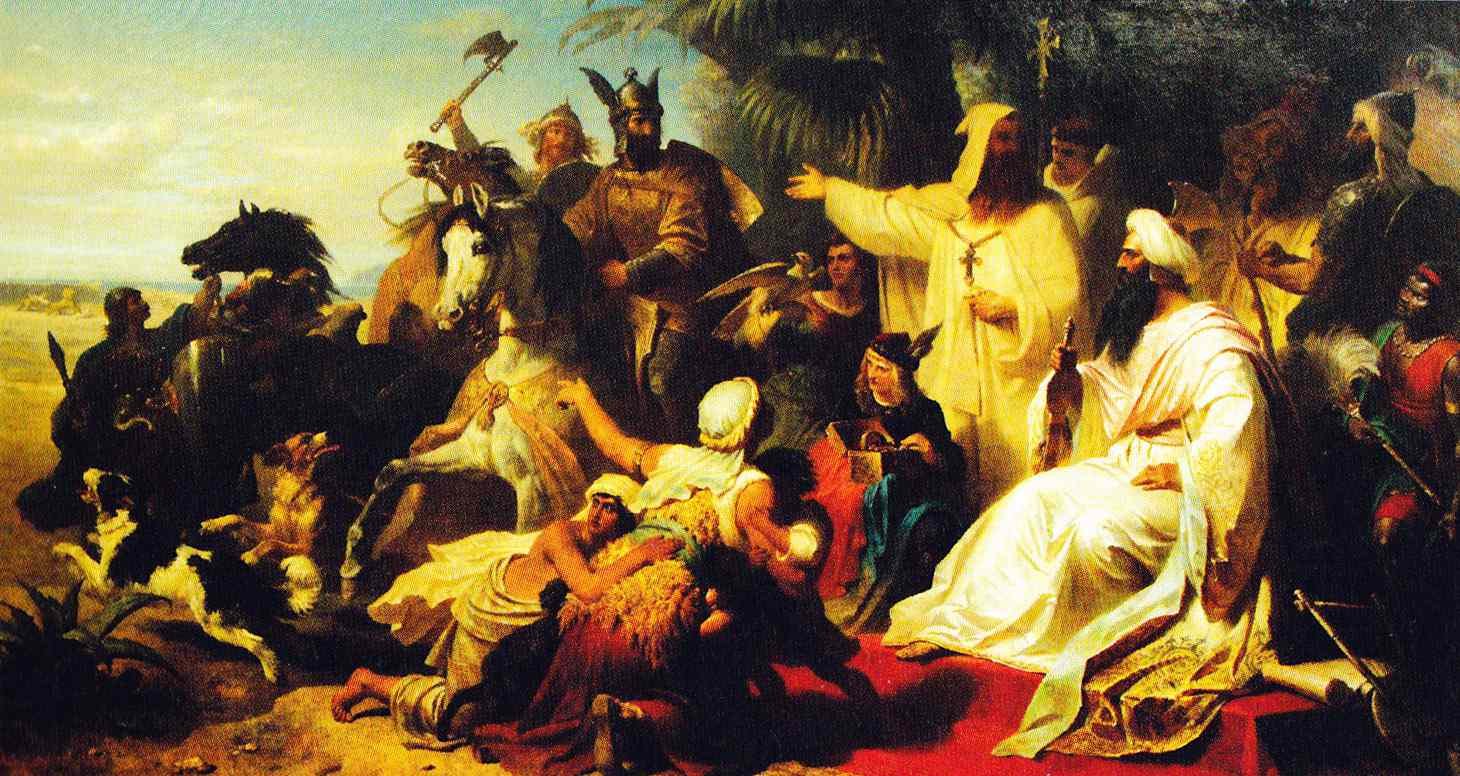
Story of Muslims Caliph “Haroon Rasheed”
Haroon Rasheed was a famous and powerful caliph of Muslims. One night, he had a dream. The next morning, he ordered dream interpreters to come to his court and tell him what the dream meant.
In Muslim era 63 or 766 – 24 March 809), famously known as Hārūn ar-Rāshīd (Arabic: هَارُون ٱلرَّشِيد, romanized: Hārūn ar-Rashīd), was the fifth Abbasid caliph of the Abbasid Caliphate, reigning from September 786 until his death in March 809. His reign is traditionally regarded to be the beginning of the Islamic Golden Age.
Every time, he had a bad dream, Haroon Rasheed would call in several interpreters. Separately to each, he would tell his dream. If all interpretations were similar, he would believe them, but if they were quite different, he would not believe any of them.
He guided them through difficult times and worked tirelessly to help them stay on the right path. In the eyes of Allah, Prophet Harun was a righteous and noble prophet, beloved by his people and praised for his steadfastness and devotion.
The day, there were two interpreters present in the court.
He summoned one of them and told him his dream, that his teeth were falling out one by one, and before he awoke, he had no teeth left in his mouth. What did it mean ? ‘Your dream, is not good,’ said the first interpreter. ‘It means that all your relatives and your close friends will die before you.’ The caliph became upset to hear this. He said, ‘ What a bitter interpretation!’ He ordered the man to be given one hundred lashes and sent away from the palace.
History of Islam Caliph
Then he summoned the second interpreter and described the same dream, asking him to interpret it. The second interpreter replied, ‘This is a good dream. It means that your life will be longer than all your friends and relatives.’ The caliph was happy to hear this. He ordered one hundred gold coins to be given to the man as a reward. Then he summoned the ‘wazir’ and said, ‘Go to the first interpreter, give him a present. ‘The first interpretation was the same as the second one, but his way of explanation was bad. Both of them said the same thing, but the first one said it badly and the second said it much better.
Harun al Rashid was the son of al Mansur and was the fourth in the Abbasid dynasty. Ascending the throne as a young man of twenty-two in the year 786, he immediately faced internal revolts and external invasion. Regional revolts in Africa were crushed, tribal revolts from the Qais and Quzhaa in Egypt were contained and sectarian revolts from the Alavis were controlled. The Byzantines were held at bay and forced to pay tribute. For 23 years he ruled an empire that had welded together a broad arc of the earth extending from China, bordering India and Byzantium through the Mediterranean to the Atlantic Ocean. Herein men, material and ideas could flow freely across continental divides. However, Harun is remembered not for his empire building, but for building the edifice of a brilliant civilization.
It was the golden age of Islam. It was not the fabulous wealth of the empire or the fairy tales of the Arabian Nights that made it golden; it was the strength of its ideas and its contributions to human thought. As the empire had grown, it had come into contact with ideas from classical Greek, Indian, Zoroastrian, Buddhist and Hindu civilizations. The process of translation and understanding of global ideas was well under way since the time of al Mansur. But it received a quantum boost from Harun and Mamun.
Harun established a School of translation Bait ul Hikmah (house of wisdom) and surrounded himself with men of learning. His administration was in the hands of viziers of exceptional capabilities, the Bermecides. His courtiers included great juris doctors, poets, musicians, logicians, mathematicians, writers, scientists, men of culture and scholars of Fiqh. Ibn Hayyan (d. 815), who invented the science of chemistry, worked at the court of Harun. The scholars who were engaged in the work of translation included Muslims, Christians, Jews, Zoroastrians and Hindus. From Greece came the works of Socrates, Aristotle, Plato, Galen, Hippocratis, Archimedes, Euclid, Ptolemy, Demosthenes and Pythagoras. From India arrived a delegation with the Siddhanta of Brahmagupta, Indian numerals, the concept of zero and Ayurvedic medicine. From Chin came the science of alchemy and the technologies of paper, silk and pottery. The Zoroastrians brought in the disciplines of administration, agriculture and irrigation. The Muslims learned from these sources and gave to the world algebra, chemistry, sociology and the concept of infinity.
What gave the Muslims the confidence to face other civilizations was their faith. With a confidence firmly rooted in revelation, the Muslims faced other civilizations, absorbing that which they found valid and transforming it in the image of their own belief. The Qur’an invites men and women to learn from nature, to reflect on the patterns therein, to mold and shape nature so that they may inculcate wisdom. ”We shall show them our Signs on the horizon and within their souls until it is manifest unto them that it is the Truth” (Qur’an, 41:53). It is during this period that we see the emergence of the archetype of classical Islamic civilization, namely the Hakim (meaning, a person of wisdom). In Islam, a scientist is not a specialist who looks at nature from the outside, but a man of wisdom who looks at nature from within and integrates his knowledge into an essential whole. The quest of the Hakim is not just knowledge for the sake of knowledge but the realization of the essential Unity that pervades creation and the interrelationships that demonstrate the wisdom of God.
What Harun started, his son Mamun sought to complete. Mamun was a scholar in his own right, had studied medicine, Fiqh, logic and was a Hafiz e Qur’an. He sent delegations to Constantinople and the courts of Indian and Chinese princes asking them to send classical books and scholars. He encouraged the translators and gave them handsome rewards. Perhaps the story of this period is best told by the great men of the era. The first philosopher of Islam, al Kindi (d. 873), worked at this time in Iraq. The celebrated mathematician al Khwarizmi (d. 863) worked at the court of Mamun. Al Khwarizmi is best known for the recurring method of solving mathematical problems, which is used even today and is called algorithms. He studied for a while in Baghdad and is also reported to have traveled to India. Al Khwarizmi invented the word algebra (from the Arabic word j-b-r, meaning to force, beat or multiply), introduced the Indian numeral system to the Muslim world (from where it traveled to Europe and became the “Arabic” numeral system), institutionalized the use of the decimal in mathematics and invented the empirical method (knowledge based on measurement) in astronomy. He wrote several books on geography and astronomy and cooperated in the measurement of the distance of an arc across the globe. The world celebrates the name of Al Khwarizmi to this day by using “algorithms” in every discipline of science and engineering.
It was the intellectual explosion created at the time of Harun and Mamun that propelled science into the forefront of knowledge and made Islamic civilization the beacon of learning for five hundred years. The work done by the translation schools of Baghdad made possible the later works of the physician al Razi (d. 925), historian al Masudi (d. 956), the physician Abu Ali Sina (d. 1037), the physicist al Hazen (d.1039), the historian al Baruni (d. 1051), the mathematician Omar Khayyam (d.1132) and the philosopher Ibn Rushd (d.1198).

